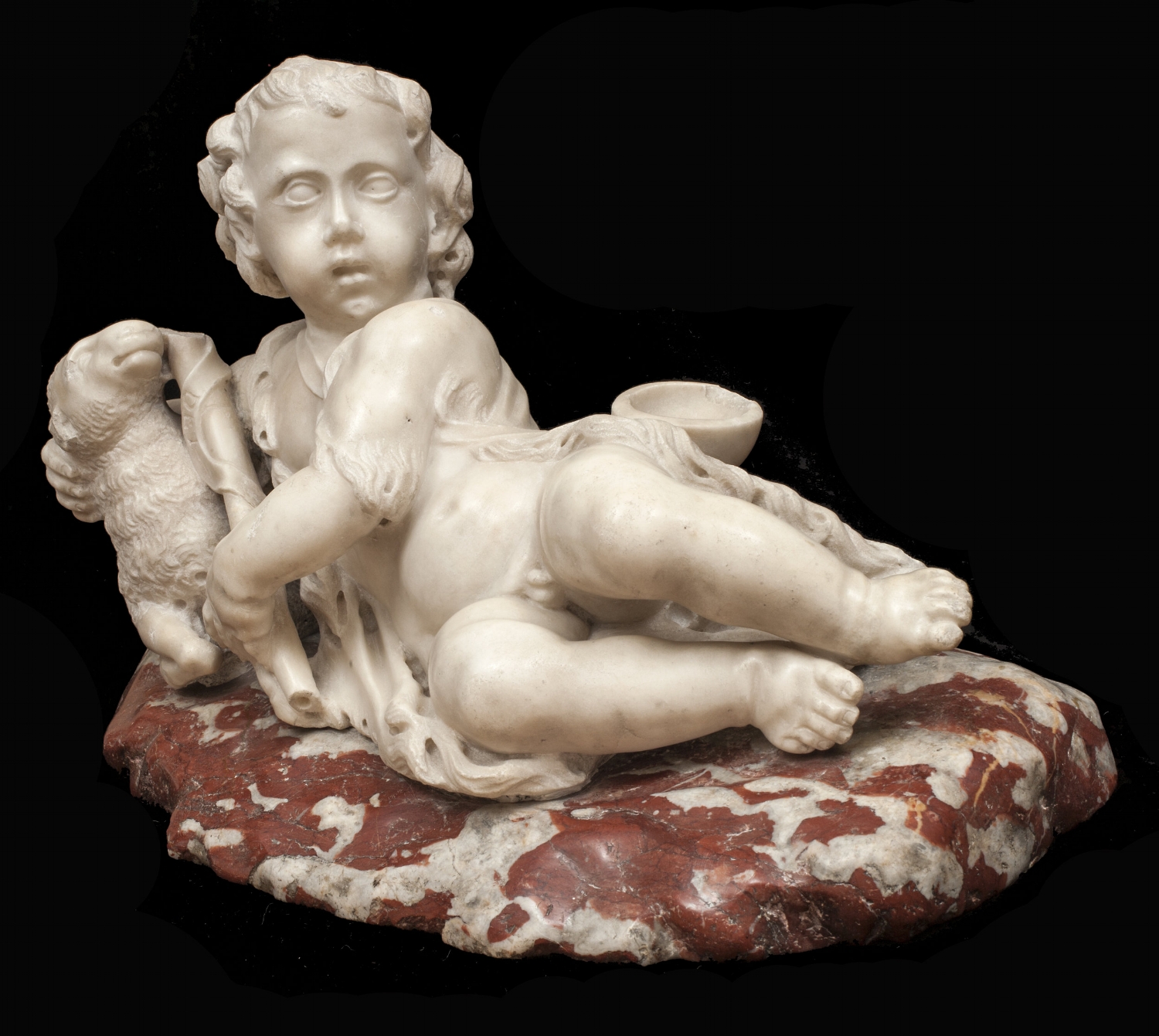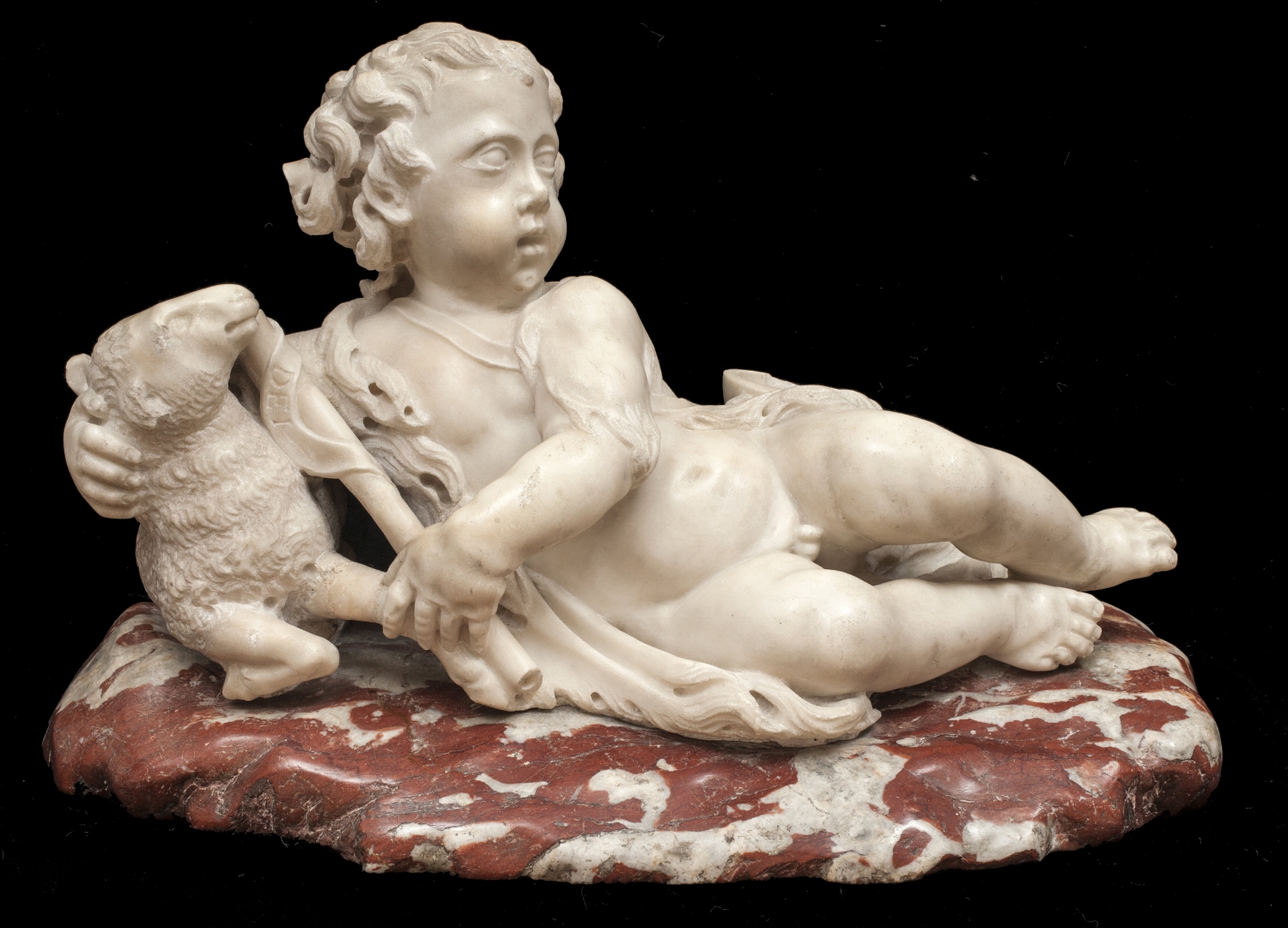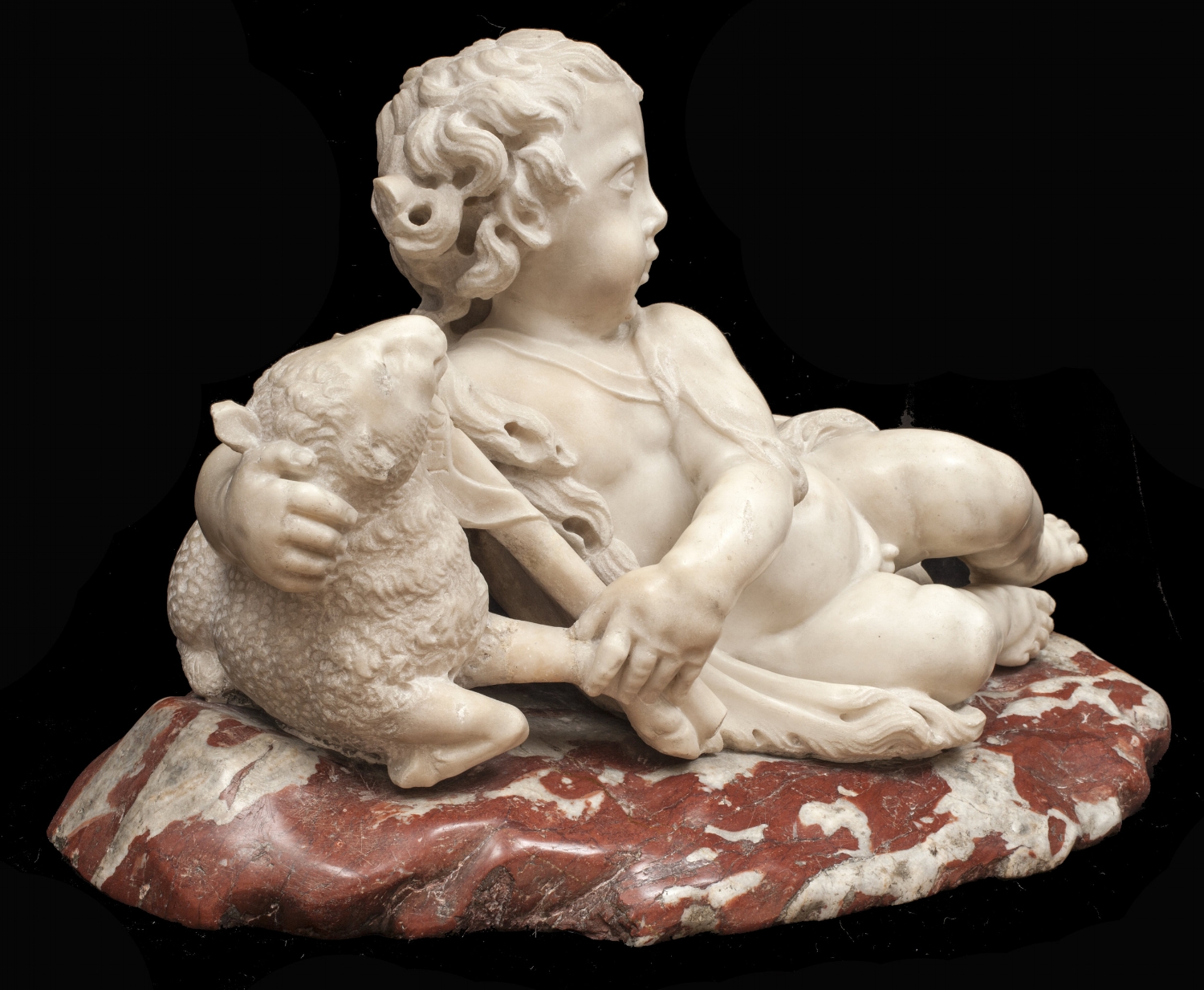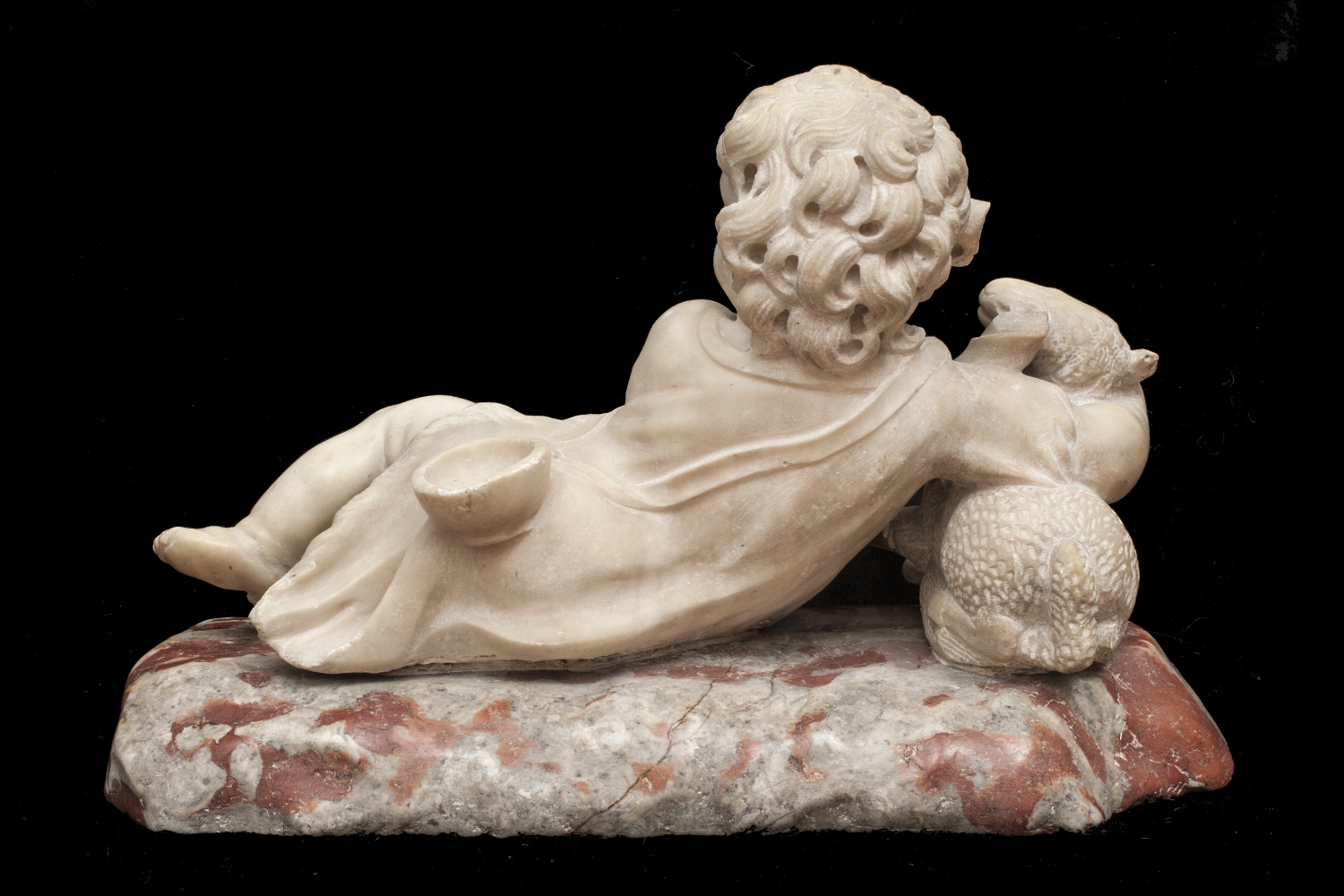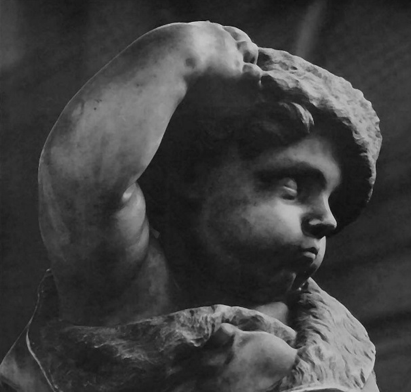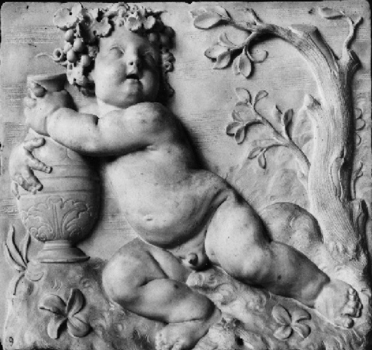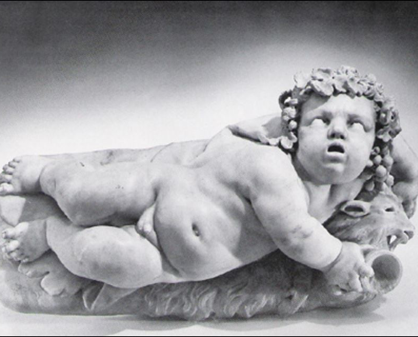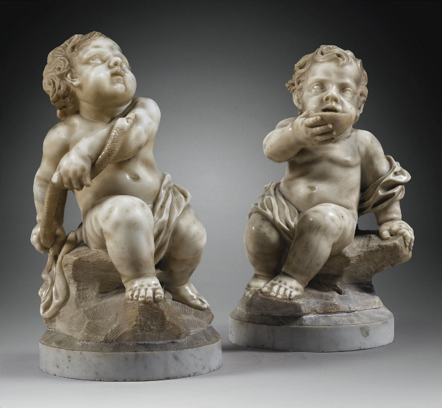Attributed to
GIUSTO LE COURT
(Ypres 1627 – Venice 1679)
The Infant Saint John the Baptist with a Lamb
Marble
21 ½ x 14 x 11 inches ( 54.6 x 35.6 x 27.9 cm)
Provenance:
James Byrnes, Los Angeles (1917-2011)
Giusto Le Court was born Josse or Justus de Corte in the Flemish city of Ypres. His father Jean was a sculptor and presumably his earliest training was with him before he entered the studio of Cornelis van Mildert. The young artist was clearly influenced by the dominant Flemish sculptor of the time, Artus Quellinus the Elder, with whom he may have worked on the decoration of the Amsterdam City Hall.
Following the lead of many northern artists he travelled to Rome, perhaps more than once, before settling in Venice around 1655. It was there, as one of a colony of expatriate artists, that he made his name as a sculptor. One of his first Venetian commissions was for the monument to Alvise Mocenigo in the Church of San Lazzaro dei Mendicanti, where Le Court sculpted the marble figures of Strength and Justice. He also collaborated with the celebrated architect Baldassare Longhena, most famously for the high altar of Santa Maria della Salute, where he carved the multi-figured altarpiece depicting the Queen of Heaven Expelling the Plague.
The present marble sculpture depicts the infant Saint John the Baptist, reclining, wearing his traditional hair-shirt, embracing a lamb, and holding the bottom of his attribute, a reed cross. Attached to his shirt is a baptismal cup, with which he would become associated later in his life. Veneration of the infant Saint John the Baptist was prevalent throughout Italy and images of the saint in childhood—often called “Giovannino,” or little John—are to be found in both domestic and ecclesiastic settings. Sculptures of the infant saint served as adornments for baptisteries, as devotional objects, as personal emblems for men named Giovanni, or simply as gifts commemorating the birth of a child.
The attribution of our sculpture to Giusto Le Court is based on the close resemblance in type and features to other depictions of infants by the artist. Among these is the Allegory of Winter at Ca’ Rezzonico, in Venice (Fig. 1); treatments of the Infant Bacchus in Padua and on the art market (Figs. 2-3); and, perhaps most of all, the pair of putti likely representing Hercules and his brother Iphicles, offered at Sotheby’s, Paris, 4 May 2016, lot 26 (Fig. 4).
The sculpture comes from the collection of James Byrnes, the first curator of modern art at the Los Angeles County Museum of Art, and later Director of both the North Carolina Museum of Art and the New Orleans Museum of Art. The white marble sculpture is presented atop a later red variegated marble base.

